Section XI of the Pius Christian Museum
Dimensions: Various
Materials: Marble
Adopted By: The Florida Chapter
Description
Section XI of the Pius Christian Museum underwent a vast and articulated restoration campaign, determined by peculiar situations and exceptions that emerged during the work that required variations on the progress of the restoration interventions established ante opera.
Section XI of the Pius Christian Museum - Final Restoration Report
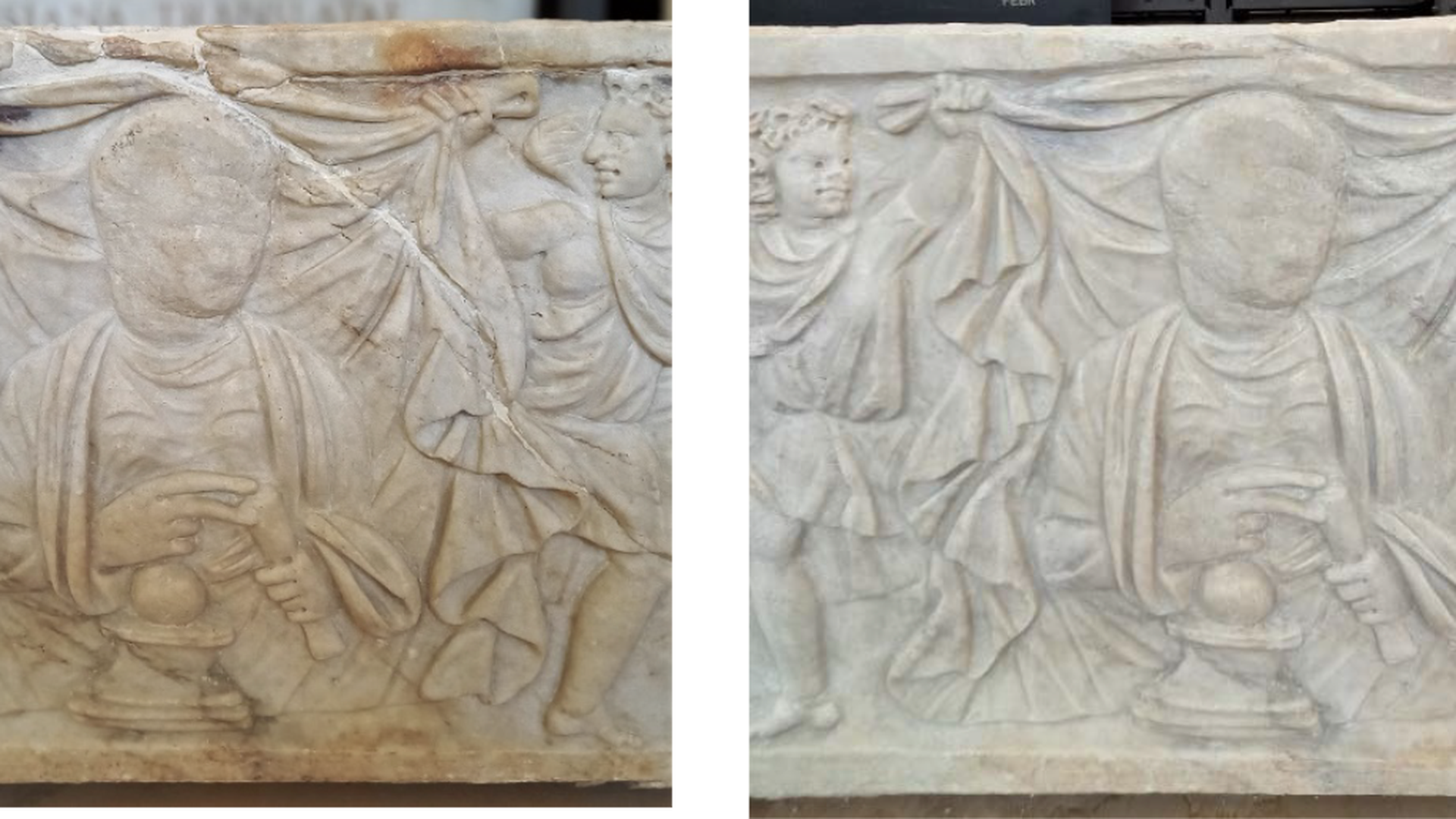
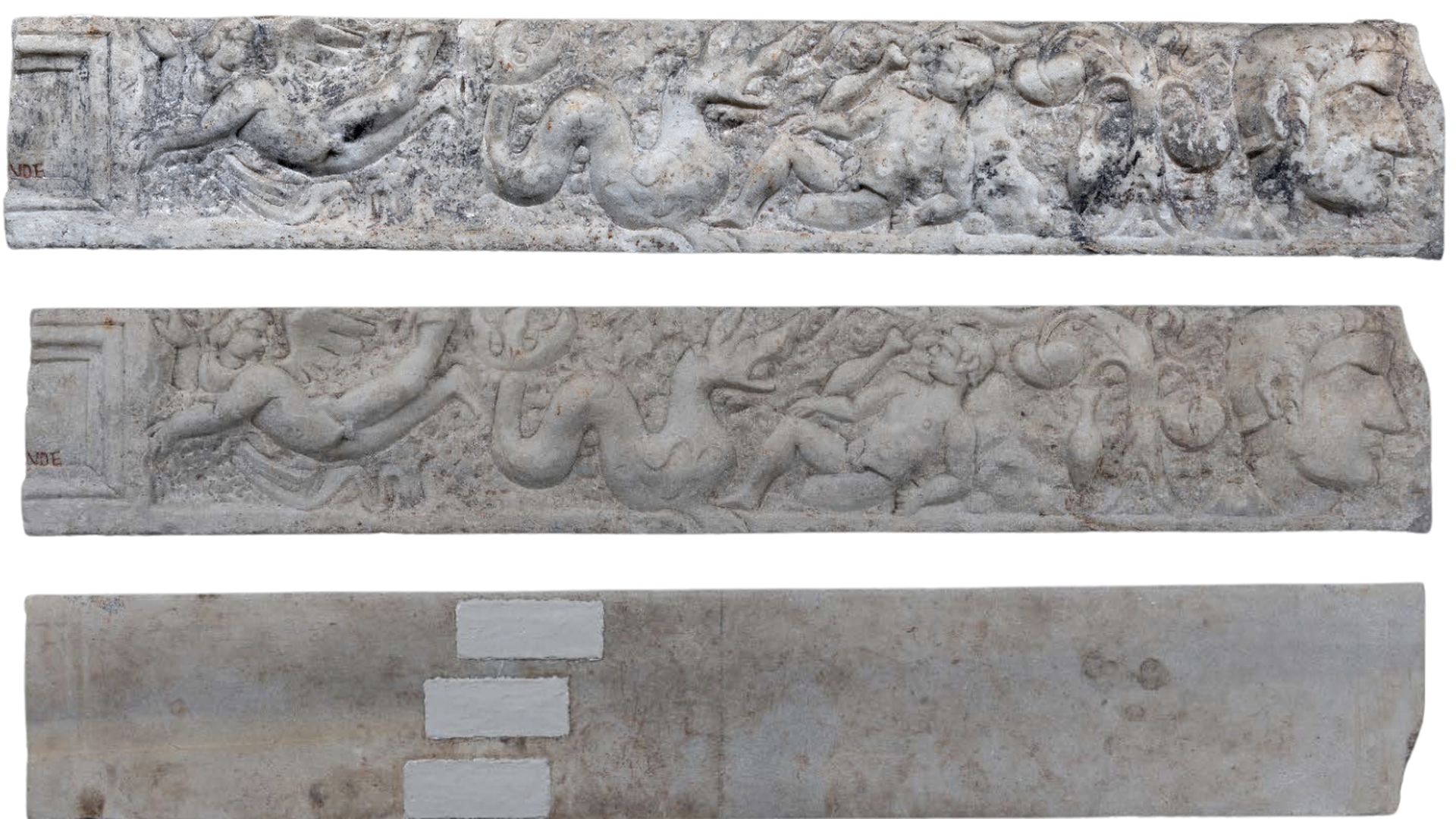
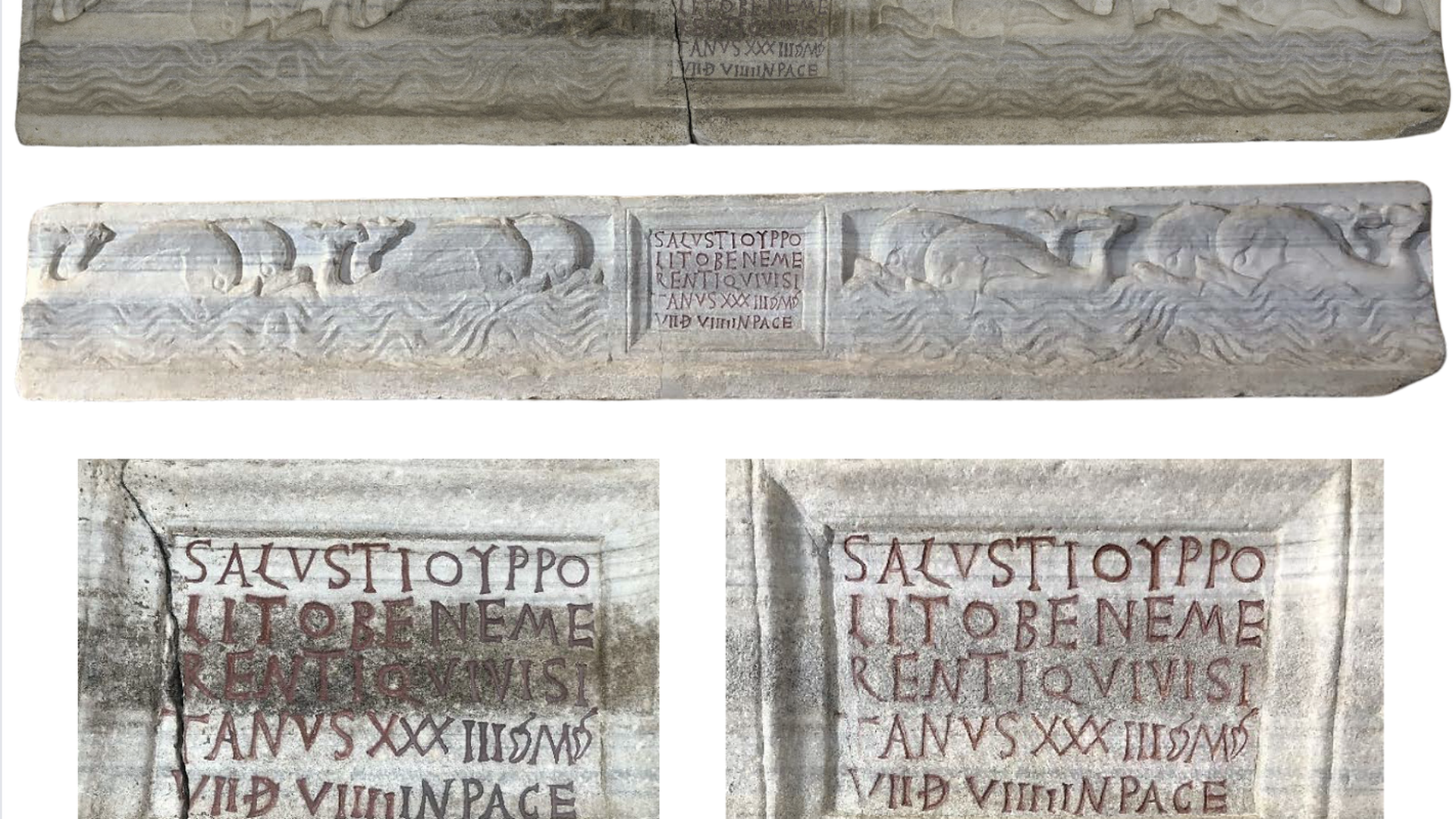
The pieces in Section XI of the Pius Christian Museum, subject to the recent restoration, are as follows:
MV_31402; MV_31406.2.1; MV_31406.2. 2; MV_31422; MV_31426; MV_31437; MV_31438; MV_31449; MV_31451; MV_31593; MV_31595; MV_31597; MV_31600; MV_31601; MV_31635; MV_31636; MV_3051; MV_31416; MV_31417; MV_31421; MV_31481. 3.1; MV_31481.3.2; MV_31481.3. 3; MV_31497; MV_31498; MV_31507; MV_31559; MV_31577; MV_31581; MV_31596; MV_31599; MV_31603; MV_31620; MV_31621; MV_31623; MV_31627; MV_31630; MV_31632; MV_31633; MV_31633.
Restoration procedures
The restorer cleaned the stone surfaces with great caution and, once identified special conditions in the preparatory phase of the restoration that required further investigation through diagnostic investigations, asked for the support of the Scientific Research Laboratory of the Vatican Museums.
The restorer used different types of lasers during the restoration and methodologies that allowed for punctual and selective interventions, complementing the use of gel-supporting systems such as Agar Agar gelled at 3% in deionized water, also without the addition of chelators or polar solvents. The restorer took great care in examining, analyzing, and preserving traces of polychromy and patination. Where necessary - as these were mostly localized degradation phenomena - the restorer performed consolidation of the surfaces affected by exfoliation and cracking.
The phase of relocation of the works to the exhibition facilities at the Pius Christian Museum, carried out by the staff of the Maintenance Team and assisted by the restorers of the Stone Materials Laboratory, was conducted with the utmost diligence.
Among the conservation problems of the pieces as a whole, there was a common darkening caused by the deposition of particulate matter and to the alteration of superimposed substances; there were also stains of various kinds, including iron oxides. More recent restorations used polyester resin and plaster for bonding detached parts or recompositions. On most of the fragments, visible surface scratches are identified. The reintegrations were in cement mortar or plaster. In the preparatory phase of the restoration, the Scientific Research Laboratory of the Vatican Museums conducted scientific investigations. In cleaning the pieces, the restorer used a combination of various methodologies, examining, analyzing, and preserving traces of polychromy and patinas. Alongside the restoration operations, photographic documentation and cataloging were carried out. Mentioned below are some works that specifically required diversified operations and in-depth investigations. During the restoration of sarcophagus case MV_31406, following the removal of the lid, it became evident that a conspicuous fragment, probably part of an early medieval pluteus, carved in bas-relief with phytomorphic decorative motifs, was used as an addition to a fragmentary part of it during a 19th-century restoration.
The piece MV_31597, which has been the subject of a relatively recent restoration, of which there is no record, however, except in the material evidence, had in the central median band an area characterized by differential degradation with a horizontal trend, which created a drastic darkening of the surface. The cleaning involved repeated applications of Agar Agar in deionized water with 0.5 percent tri ammonium citrate followed by applications limited to the median band of zeolite and deionized water until dry and mechanical removal of the product by dusting. The post-rubrication was removed in successive and punctual passes by swabbing with acetone. Next, localized consolidations were determined to be performed on the fascia with differential degradation by infiltration of nanocalcium in isopropanol. To conclude, grouting was carried out, specifically in the center of the central tabula with the sepulchral inscription, with mortar based on fine-grained marble powder and lime putty, followed by color balancing with ventilated earth.

Section XI of the Pius Christian Museum
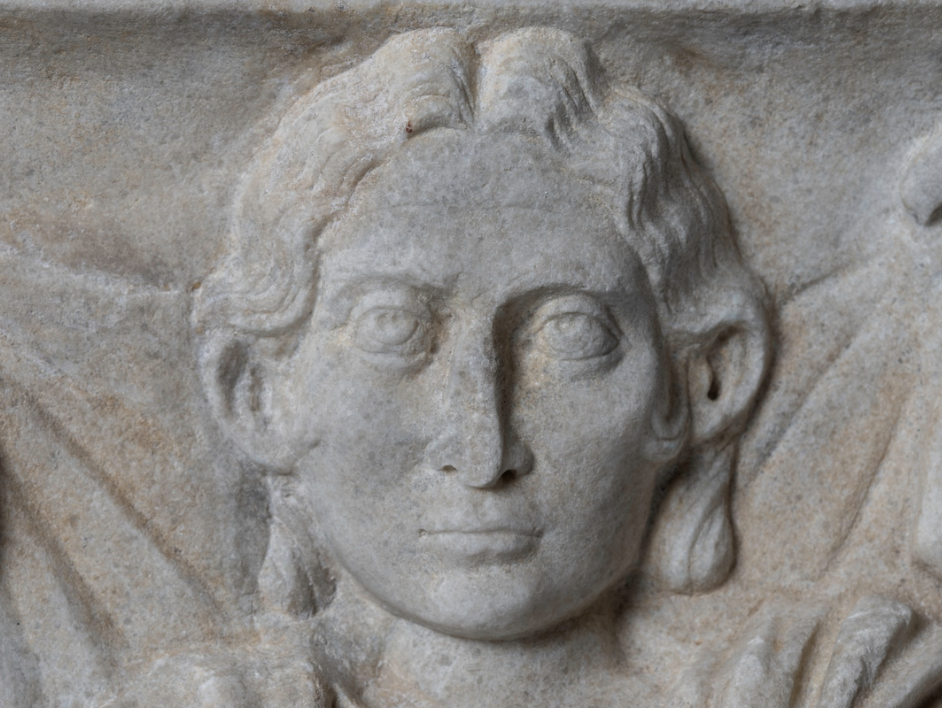
Details
Adopted by: The Florida Chapter
Materials: Marble
Dimensions: Various
Description
Section XI of the Pius Christian Museum underwent a vast and articulated restoration campaign, determined by peculiar situations and exceptions that emerged during the work that required variations on the progress of the restoration interventions established ante opera.
Restorations Update: Section XI of the Pius Christian Museum - Final Restoration Report
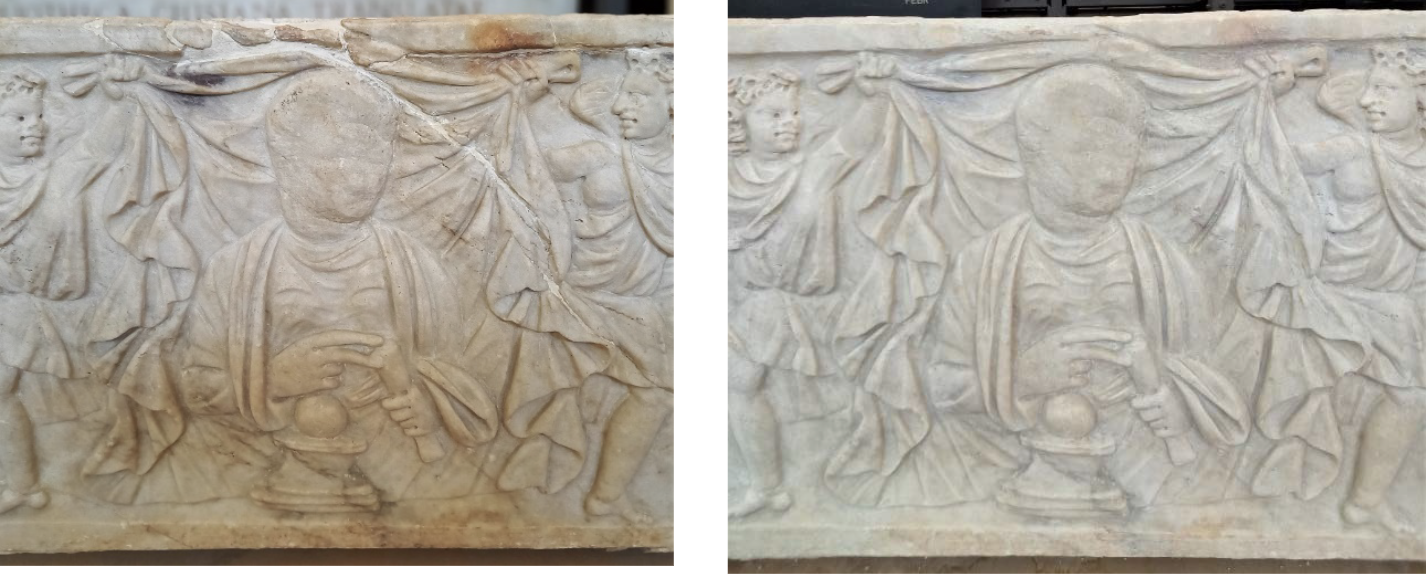
The pieces in Section XI of the Pius Christian Museum, subject to the recent restoration, are as follows:
MV_31402; MV_31406.2.1; MV_31406.2. 2; MV_31422; MV_31426; MV_31437; MV_31438; MV_31449; MV_31451; MV_31593; MV_31595; MV_31597; MV_31600; MV_31601; MV_31635; MV_31636; MV_3051; MV_31416; MV_31417; MV_31421; MV_31481. 3.1; MV_31481.3.2; MV_31481.3. 3; MV_31497; MV_31498; MV_31507; MV_31559; MV_31577; MV_31581; MV_31596; MV_31599; MV_31603; MV_31620; MV_31621; MV_31623; MV_31627; MV_31630; MV_31632; MV_31633; MV_31633.
Restoration procedures
The restorer cleaned the stone surfaces with great caution and, once identified special conditions in the preparatory phase of the restoration that required further investigation through diagnostic investigations, asked for the support of the Scientific Research Laboratory of the Vatican Museums.
The restorer used different types of lasers during the restoration and methodologies that allowed for punctual and selective interventions, complementing the use of gel-supporting systems such as Agar Agar gelled at 3% in deionized water, also without the addition of chelators or polar solvents. The restorer took great care in examining, analyzing, and preserving traces of polychromy and patination. Where necessary - as these were mostly localized degradation phenomena - the restorer performed consolidation of the surfaces affected by exfoliation and cracking.
The phase of relocation of the works to the exhibition facilities at the Pius Christian Museum, carried out by the staff of the Maintenance Team and assisted by the restorers of the Stone Materials Laboratory, was conducted with the utmost diligence.
Among the conservation problems of the pieces as a whole, there was a common darkening caused by the deposition of particulate matter and to the alteration of superimposed substances; there were also stains of various kinds, including iron oxides. More recent restorations used polyester resin and plaster for bonding detached parts or recompositions. On most of the fragments, visible surface scratches are identified. The reintegrations were in cement mortar or plaster. In the preparatory phase of the restoration, the Scientific Research Laboratory of the Vatican Museums conducted scientific investigations. In cleaning the pieces, the restorer used a combination of various methodologies, examining, analyzing, and preserving traces of polychromy and patinas. Alongside the restoration operations, photographic documentation and cataloging were carried out. Mentioned below are some works that specifically required diversified operations and in-depth investigations. During the restoration of sarcophagus case MV_31406, following the removal of the lid, it became evident that a conspicuous fragment, probably part of an early medieval pluteus, carved in bas-relief with phytomorphic decorative motifs, was used as an addition to a fragmentary part of it during a 19th-century restoration.
The piece MV_31597, which has been the subject of a relatively recent restoration, of which there is no record, however, except in the material evidence, had in the central median band an area characterized by differential degradation with a horizontal trend, which created a drastic darkening of the surface. The cleaning involved repeated applications of Agar Agar in deionized water with 0.5 percent tri ammonium citrate followed by applications limited to the median band of zeolite and deionized water until dry and mechanical removal of the product by dusting. The post-rubrication was removed in successive and punctual passes by swabbing with acetone. Next, localized consolidations were determined to be performed on the fascia with differential degradation by infiltration of nanocalcium in isopropanol. To conclude, grouting was carried out, specifically in the center of the central tabula with the sepulchral inscription, with mortar based on fine-grained marble powder and lime putty, followed by color balancing with ventilated earth.
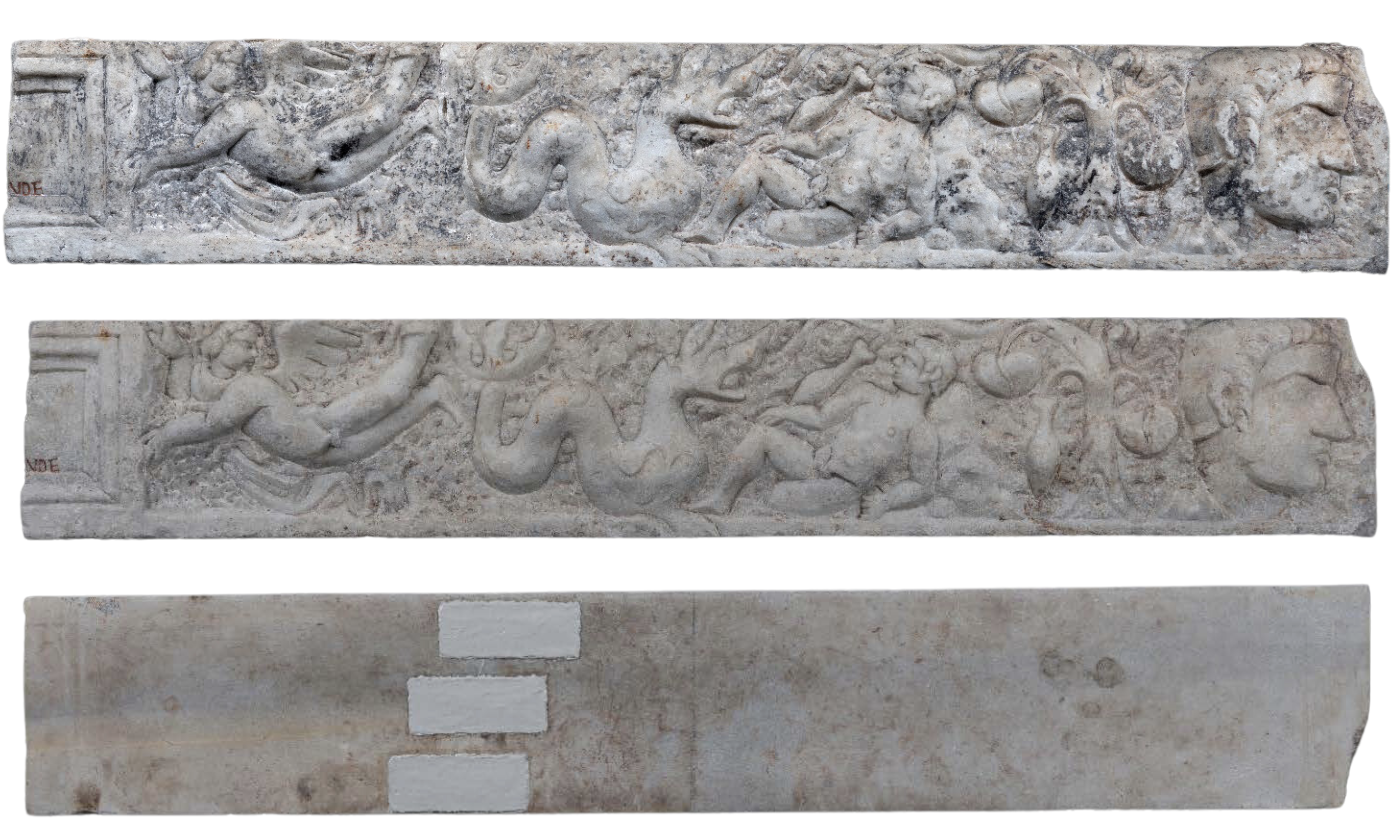
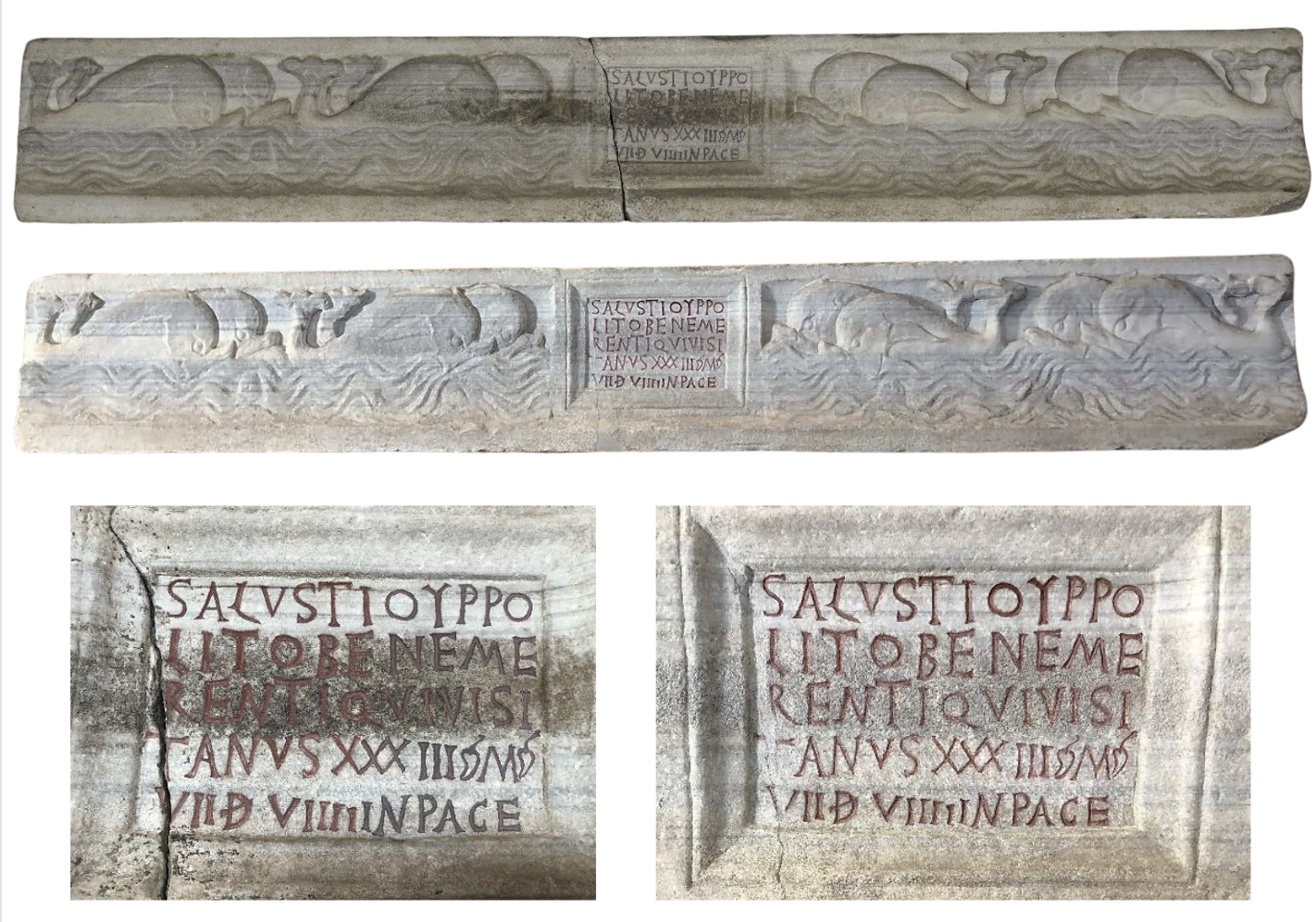

© 2025 Patrons of the Arts
in the Vatican Museums
Vatican Museums V-00120,
Vatican City State (Europe)
+39 0669864499
